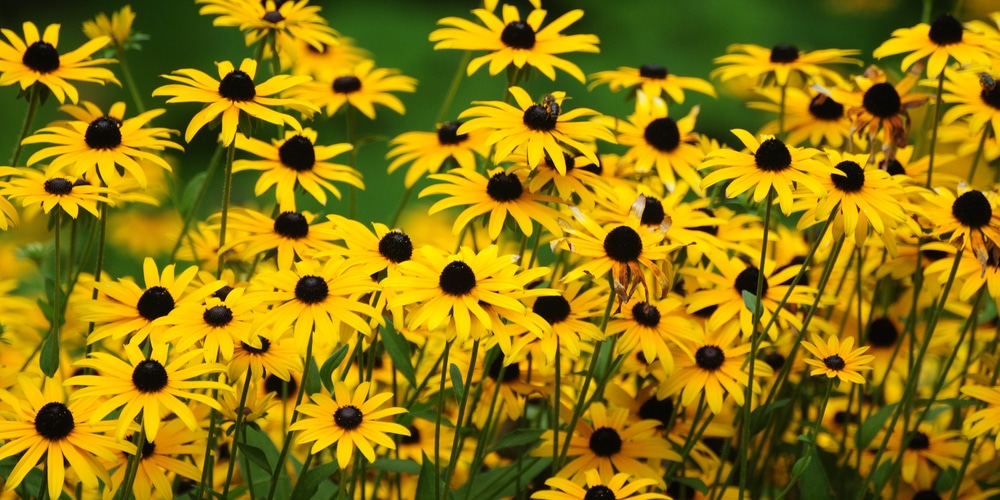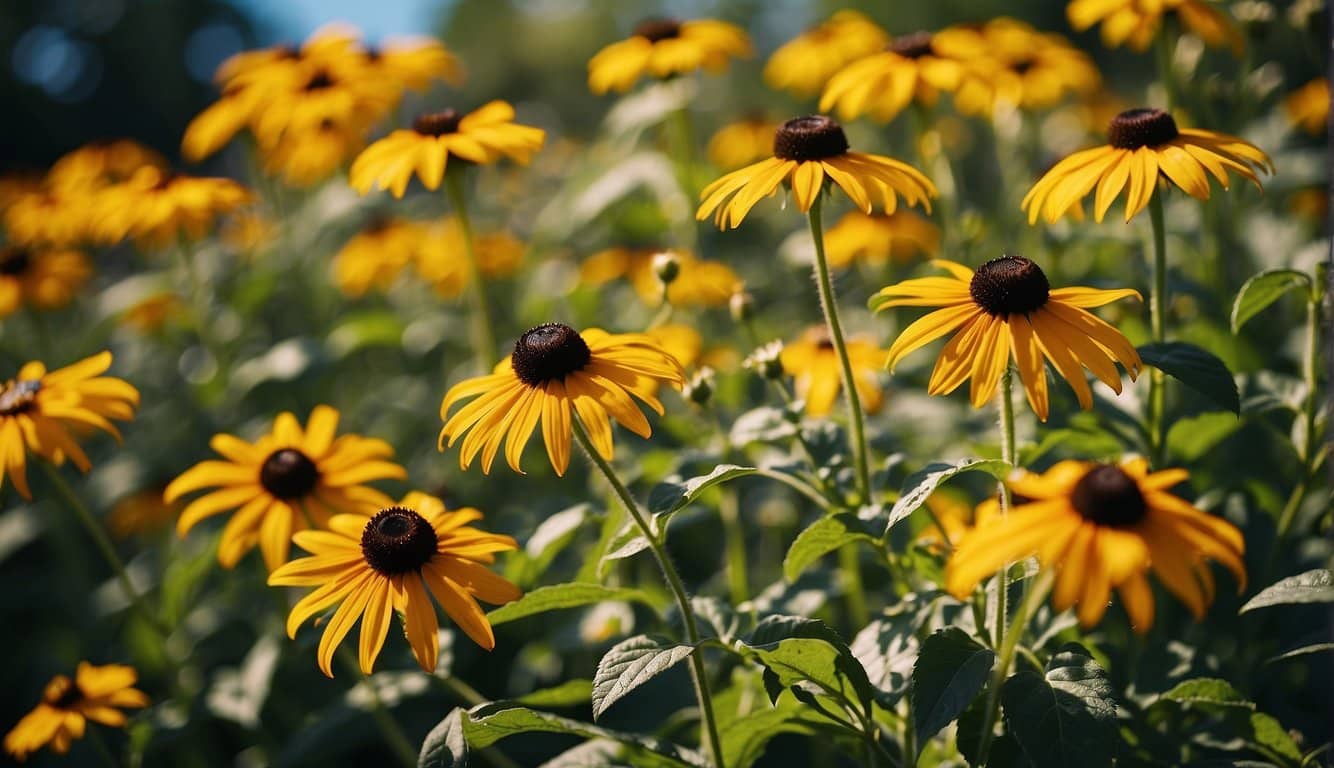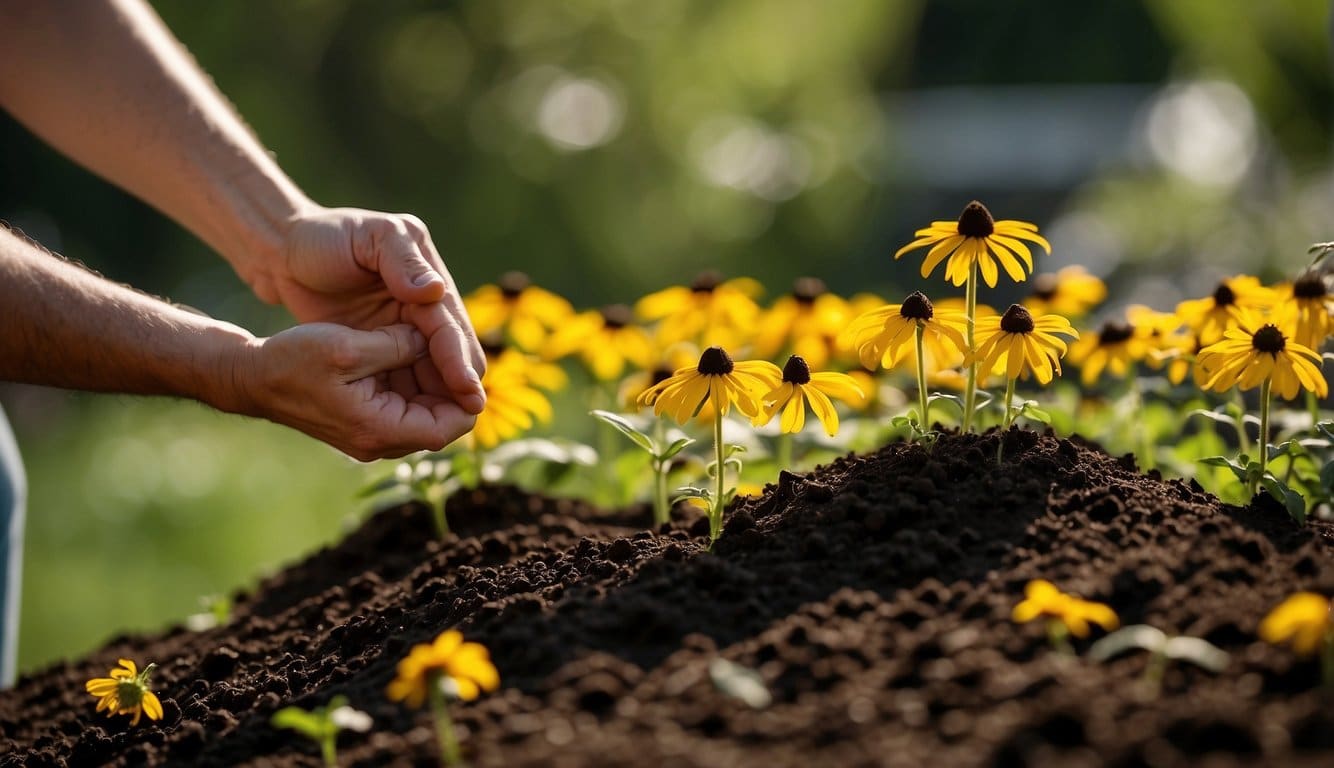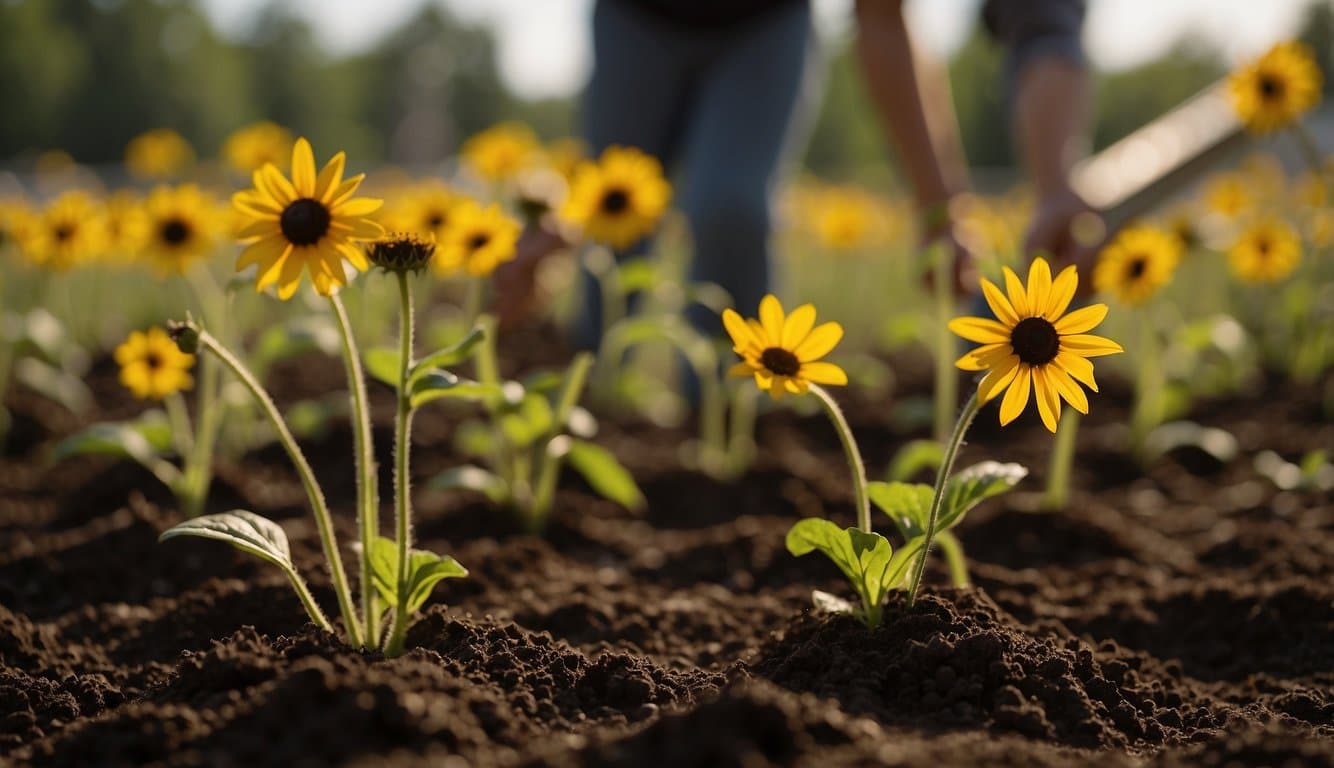| Question | When to Plant Black Eyed Susans? |
|---|---|
| Answer | Seeds: In fall (mild winters) or spring after frost. Seedlings: Spring after frost or early fall. |
| More Info |
|

Black Eyed Susans (Rudbeckia spp.) can be planted at different times depending on your climate and whether you start with seeds, seedlings, or mature plants.
- Seeds: Directly sow Black Eyed Susan seeds outdoors in the fall where winters are mild. In colder climates, sow seeds indoors 6-8 weeks before the last expected frost, or directly outdoors after the danger of frost has passed in spring. Fall sowing allows the seeds to undergo natural stratification, enhancing germination in spring.
- Seedlings or Young Plants: Plant these in the garden in spring after the risk of frost has passed or in early fall, giving them time to establish before winter.
Black Eyed Susans thrive in full sun and well-drained soil. They are adaptable, drought-tolerant once established, and suitable for a wide range of garden settings.
Understanding Black Eyed Susans
Black-Eyed Susans, known scientifically as Rudbeckia hirta, are cherished for their bright and cheerful yellow petals that encircle a distinctive dark brown or black center.
Gardeners often favor these hardy perennials for their ability to thrive in a range of conditions and their prolonged blooming period.
Growth Habit
- Typically, they reach heights of 2 to 3 feet.
- They form clumps that can be 12 to 18 inches wide.
- The foliage is usually hairy and lance-shaped.
Floral Characteristics
- Petals radiate from a dark, central cone.
- Flowering occurs from early summer to autumn.
Varieties Black-Eyed Susans include over 24 native species across North America, offering a spectrum of colors beyond the iconic yellow, including oranges, reds, and browns.
Cultivation Needs
- Plant when soil temperature is at least 60°F (15.5°C).
- Full sun exposure is ideal, with well-draining soil.
- Moderate water requirements, with more frequent watering in extreme heat.
Ecological Impact They attract pollinators such as butterflies and bees, contributing to the health of the surrounding plant life and aiding in garden biodiversity.
Considerations for Gardeners
- Spacing: Place plants about 18 inches apart.
- Soil: They prefer soil cleared of weeds and loosened for better root penetration.
Ideal Planting Time
To ensure healthy growth and blooming, gardeners should plant black-eyed Susans at times that support root development and reduce stress on the plants.
Seasonal Considerations
Spring: Planting in early spring is advantageous as it allows black-eyed Susans to establish strong roots before the intensity of summer heat.
The seeds should be sown approximately six weeks before the average last frost to ensure they are not damaged by cold temperatures.
Fall: Another suitable time for planting these flowers is in the fall.
This season lets them acclimatize and fortify their root systems during the cooler months, provided that this is done well before winter sets in to prevent freezing.
Regional Climate Factors
Temperate Regions: Gardeners should ensure all danger of frost has passed before planting. Soil temperatures of 70° to 75°F (21° to 24°C) are ideal for germination.
Colder Climates: In areas with extended winters, it’s crucial to wait until the soil has warmed to at least 60°F (15.5°C) and all frost has definitively passed.
Soil Preparation for Black Eyed Susans
Before planting Black Eyed Susans, one must ensure the soil is adequately prepared to support their growth. They thrive in a soil environment that offers good drainage with a neutral to slightly acidic pH. A soil test can be beneficial to determine the soil’s current condition and whether amendments are necessary.
Site Selection and Soil Composition:
- Choose a location with full sun to partial shade. Black Eyed Susans are adaptable but prefer soil containing organic matter.
- Mix in compost or well-rotted manure to enrich the soil and improve its structure.
- Loosening the Soil:
- To encourage root growth, loosen the soil to a depth of 12-18 inches. This creates a welcoming environment for the roots to spread easily.
- Weed Removal:
- Remove any weeds from the planting site to reduce competition for resources. Ensure the area is clear of roots and debris.
Soil Moisture Management:
- Watering the soil before planting is crucial to provide a moist environment. However, care should be taken not to oversaturate, as standing water can lead to root rot.
Remember to check the soil temperature. For successful germination and growth, the soil should be at least 60°F (15°C).
Patience is vital—wait until after the last frost to plant outdoors to protect the seedlings from cold snaps.
Planting Process
Choosing the Right Time: Gardeners should plant Black-Eyed Susans after the danger of frost has passed in spring, typically after the last winter frost of the season.
Alternatively, they can plant in fall, several weeks before the first expected frost. The seeds can be sown six weeks prior to the last frost date.
Soil Preparation:
- Loosen the soil to a depth of 6-8 inches.
- Remove weeds and large stones.
- Ensure the planting site has good drainage.
Plant Spacing: Allow for approximately 18 inches between plants to provide enough room for growth.
Sowing Seeds:
- Scatter the seeds over the prepared soil.
- Cover the seeds lightly with soil, no more than 1/4 inch deep.
- Water the area well to encourage germination.
Transplanting Seedlings:
- Harden off seedlings by gradually exposing them to outdoor conditions.
- When the soil temperature reaches 60°F (15.5°C), transplant the seedlings into the garden.
- Water the seedlings regularly to maintain moist soil.
Care After Planting:
- Water the plants regularly, particularly during dry spells.
- Mulch around plants to help retain moisture and control weeds.
- Deadhead spent flowers to encourage new blooms.
Note: Black-Eyed Susans thrive in full sunlight and are tolerant of various soil types, including clay, dry, and rocky soils, as long as they are well-drained.
Aftercare and Maintenance
Once Black-Eyed Susans are planted, they require minimal but consistent care to flourish. These hardy perennials thrive with the following aftercare and maintenance practices:
- Watering: They need regular watering, especially during dry spells. Aim for about an inch of water per week, being cautious not to overwater, as this can lead to root rot.
- Mulching: Applying mulch helps retain soil moisture and suppresses weeds. A two-inch layer of organic mulch such as shredded bark or compost is beneficial.
- Deadheading: To encourage prolonged blooming, one should remove spent flowers. This prevents the plants from early seeding and promotes additional blooms.
Activity Purpose Frequency Watering Maintain moisture 1 inch/week Mulching Retain moisture, suppress weeds As needed Deadheading Encourage blooms Throughout blooming season - Fertilizing: These plants are not heavy feeders, but an application of a balanced, slow-release fertilizer in the spring can support their growth.
- Dividing: To manage spread and invigorate older clumps, gardeners can divide the plants every 3-4 years in either spring or fall.
- Pest and Disease Management: They are generally resistant but watch for signs of aphids or fungal diseases such as powdery mildew.
If pests or diseases appear, treat them with appropriate organic or chemical treatments, following local regulations and product instructions.
Frequently Asked Questions
When growing Black-eyed Susans, gardeners often have specific questions regarding planting times, perennial care, and maintaining the vibrancy of these cheerful flowers.
How should Black-eyed Susan seeds be planted in different hardiness zones?
In various hardiness zones, Black-eyed Susan seeds should be sown in early spring after the threat of frost has passed.
Gardeners in warmer zones, where the ground thaws earlier, can plant them sooner than those in cooler zones.
What is the optimal timing to plant Black-eyed Susan seeds outdoors?
The best time to plant Black-eyed Susan seeds outdoors is when the soil temperature reaches at least 60°F (15.5°C), usually in late spring to early summer, ensuring the seedlings are not affected by frost.
Can Black-eyed Susan perennials survive winter and return the following year?
Black-eyed Susan perennials are hardy and can survive winters, returning the following year.
They tend to form a basal rosette of leaves that persist through winter, contributing to the garden’s aesthetic in colder months.
What care is required to maintain the health and growth of Black-eyed Susans?
To maintain their health, Black-eyed Susans should be planted 18 inches apart in weed-free, loose soil.
They require watering after planting, and consistent moisture is necessary for sustained growth. Deadheading promotes further blooming.
At what point during the growth cycle should Black-eyed Susans be deadheaded?
Black-eyed Susans should be deadheaded once the flower heads dry out and wilt. This typically occurs after the blooms have been fully open and begin to fade. Deadheading encourages a second bloom in late summer or early fall.
What are the considerations for planting Black-eyed Susan seeds in the fall?
While spring is the ideal time to plant, Black-eyed Susan seeds can also be sown in the fall.
In areas with mild winters, planting in fall allows for an early start in spring. However, seeds may not survive if the winter is particularly harsh or if they are not given adequate protection.
Last update on 2025-04-29 / Affiliate links / Images from Amazon Product Advertising API





